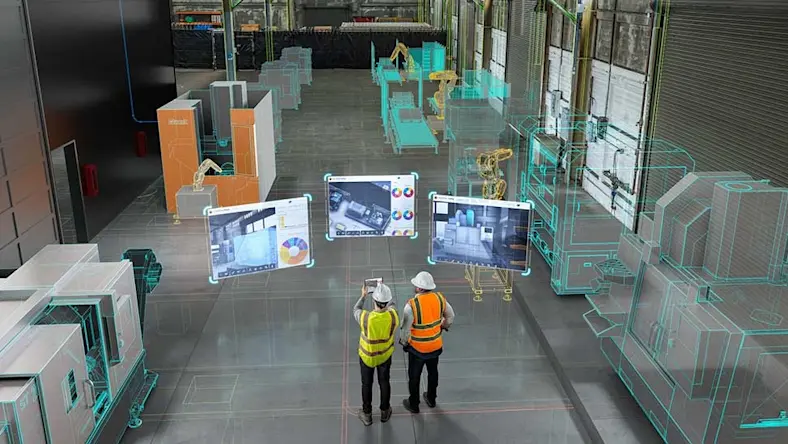& Construction

Integrated BIM tools, including Revit, AutoCAD, and Civil 3D
& Manufacturing

Professional CAD/CAM tools built on Inventor and AutoCAD
David Benjamin, Director, ACC Industry Futures, Autodesk : I think there are a lot of critical challenges in AEC right now. It’s expected that population will grow by 2 or 3 billion people in about the next 30 years. We know that there’s also a massive urbanization. More and more people are moving to cities. As a consequence of this, it’s expected that building floor area will double by about 2050. That means the construction of 13,000 buildings every single day for the next 30 years.
This is happening at exactly the same time that we are facing a lot of issues with climate change. Luckily, the global community is starting to come together, and there are goals to cut carbon emissions in half by 2030 and eliminate carbon emissions entirely by 2050. So I think that sets the stage for this huge challenge.
Rob Maguire, Vice President, AEC Design Platform : The most talented architects and engineers out there want to make a difference. They want to drive toward certain outcomes around sustainability or energy management. And many of these work processes cannot be done with the current set of tools.
Benjamin : I think there’s a real opportunity for software tools and workflows like cloud-based platforms to spur innovation in AEC to help us address some of these big challenges that the whole industry faces.
Maguire : Traditionally, our data sets and our applications have been very siloed. Architects create their designs, and general contractors create the buildings. Issues of liability have prevented them from sharing information across these boundaries. Without sharing that information, we cannot create automations or glean insights from what is actually being created and what we really need to realize. The next generation of [building information modeling] BIM is spanning those boundaries. So whether you’re doing the rough shape of a building and a massing planning exercise, or you’re locating the concrete plant next to the construction site, or you’re using a digital twin with [internet of things] IoT, measuring how successful you were, all of these sustainability aspects need to be centrally managed to really get the outcome that you’re looking for.
But now, with a cloud that is integrated and interoperable, we can start to move data between these different product lines in ways that were not really possible before.
Benjami n: Cloud-based platforms can enable something that’s going to be so critical for the buildings and infrastructure of the future, which is complex, full-lifecycle assessment of projects. What where all the raw materials required? How much energy was consumed in the manufacturing of those materials, any of the carbon emissions involved in assembling that structure? But also, how is that structure going to perform over time? How much energy is it going to consume? How much carbon emissions? How quickly will things need to be replaced? Also importantly, what’s going to happen at the end of the useful life of that building or bridge? There’s a huge amount of complexity there.
These are all things that are going to really supercharge design professionals of the future, and they’ll be enabled by these kind of open environments, shared data, and these cloud-based platforms.
Maguire : Forma is the Autodesk AEC industry cloud built on top of Autodesk Platform Services. It seeks to reimagine the AEC experience in all phases of the project, from plan to design, build, and operate across all of our subindustries, such as building, transportation, water, and industrial. All of these subindustries and phases of the project are served by different pieces of the Autodesk portfolio today, but they’re very disjointed and difficult to manage through.
By pulling it all together and gleaning the power of that connected data set, we can automate an incredible number of processes and yield outcomes that were not really imaginable before.
Benjamin : The combination of design, build, and operate has some really interesting possibilities in this cloud-enabled new form of workflow. We’ll see the ability for circular economy to really come to life in a new way. What we learn from operate can inform how we design and vice versa.
Maguire : Some of the things that are possible with a connected ecosystem across the project lifecycle are truly profound. I can design my facility to be built off-site. I can design the building product manufacturing components such as the lighting, where the windows assemble it in a factory off-site and modularly assemble the entire thing in one big shot. This is not possible with a fragmented workflow across multiple different product lines.
Benjamin : These advances will allow us to not have to start every project from scratch. We can build on what we’ve done before. We can build on what others have done.
Reusing our design intelligence is so critical to being able to address some of these challenges of the future. We won’t be able to build 13,000 buildings a day. We won’t be able to bring the carbon emissions of architecture down to zero by 2050 without this kind of reusable design intelligence and without these kind of cloud-enabled workflows that bring together all the data of a project and past projects in a very actionable way.
Executive insights
AECO
AECO


